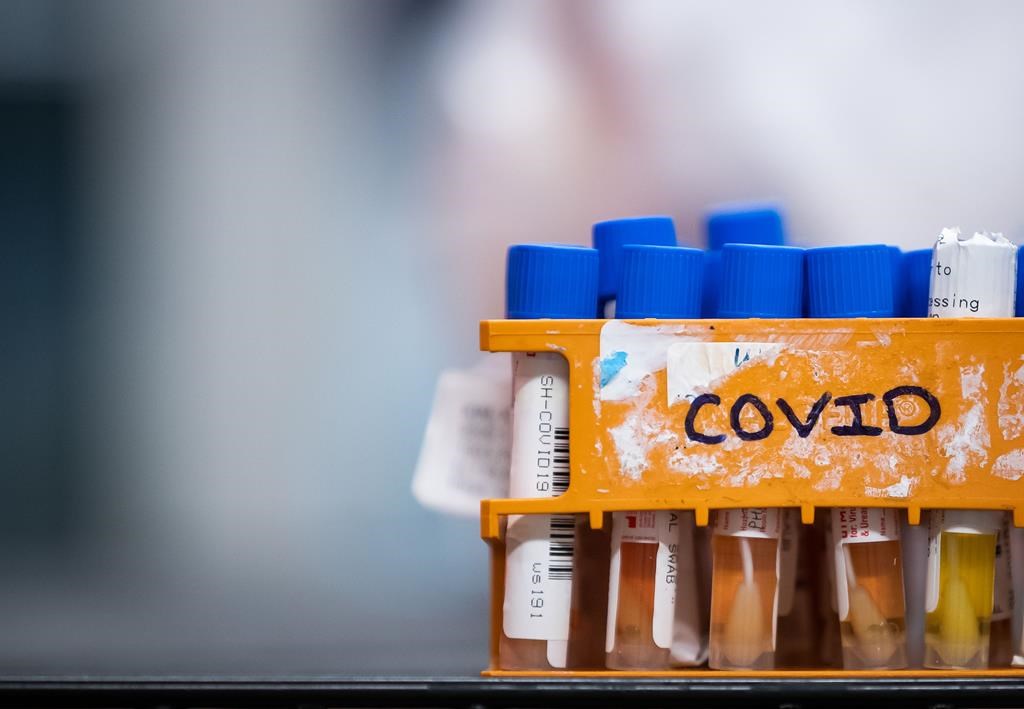What are your chances of getting long COVID?

Posted July 18, 2022 2:21 pm.
Last Updated July 18, 2022 2:25 pm.
As COVID-19 infections once again begin to rise amid the latest Omicron wave, a team of scientists is looking into long COVID and what increases your chances of getting it.
Epidemiologist Dr. David Steadson says he and his team have been looking over existing data. That has shown, he explains, that the more times you catch COVID — even if you are vaccinated — the more likely you’ll experience long COVID.
“Think about it like you’re rolling dice. Let’s say you don’t want a six. Your odds of getting a six are one in six. But what if you keep rolling the dice? Sooner or later, you’re going to get that six. That’s pretty much where we’re at at the moment,” he explained. “We don’t know if your risk of getting long COVID changes every time you get an infection — some immunologists believe it decreases, others believe it increases, and some believe it may be more random than that.”
However, he notes his calculations show that if the risk are stable, it’s inevitable the risk of long COVID will increase “if we keep letting everybody get infected regularly.”
Here is an updated copy of my graph on the cumulative risk of Long Covid correcting some minor errors and improving the explanation.
tl;dr – If you keep getting infected, you’re probably going to get Long Covid. pic.twitter.com/uz7f2yYzIN
— David Steadson (@DavidSteadson) July 16, 2022
“This really depends on what your risk of getting long COVID is every time you get an infection, and we don’t know whether that risk increases or decreases — there are studies suggesting both. But if we just assume the risk stays the same — and the CDC in the United States reported a few weeks ago that their estimate is that your risk of getting long COVID when you’re infected is about 20 per cent — the math shows that … within five infections, the odds you’ve got long COVID of some variety is at least 50 per cent,” Steadson warned.
The B.A.5 subvariant of Omicron is currently fuelling the next wave of the pandemic.
The subvariant is more transmissible than previous ones, something that’s key to remember, Steadson says.
“The pandemic is not over. This virus is still around. The vaccines are doing a fantastic job of protecting us from getting severely ill and ending up in hospital. Around the world, we’re seeing a lot of increasing pressure there because the numbers of people that are getting infected. But long COVID has been sitting under the radar and virtually being ignored. That’s a problem,” he explained.
Steadson points to SARS in the early 2000s and the learnings that came from that virus. He notes that instance shows what severe long COVID can look like.
“Even actually in Canada and Toronto, they found that nearly half of health care workers, 10 years after they had been infected with SARS, couldn’t return to work. Similarly, in Hong Kong, they found about a third of their health care workers who were infected could not return back to work,” Steadson told CityNews.
“So this problem with post-viral illnesses is not a surprise. It doesn’t happen with every virus but we know it does happen with other viruses as well.”
As the next wave of COVID-19 hits provinces across the country, actual numbers of people infection is unclear as many jurisdictions have stopped regular testing.
Steadson worries about what impact long COVID will have, as the health care system nationwide is stretched thin and the economy also struggles amid rising inflation rates and staffing shortages across varying industries.
Steadson, who is based in Sweden, says the more people are unable to work and the more businesses and industries are unable to fill vacant positions, the effects will be widespread.
“It’s just going to get worse,” he said.
“Now, people do recover from long COVID,” Steadson added, noting he, himself, has had long COVID and recovered. “My 16-year-old son, he got long COVID on his second infection — he is still ill and could not go to school any more than one to two days per week for the last year and a half. Hopefully he improves on the same track I am. But we’re seeing these reports around the world. The more people get infected, the more times we’re getting infected, it’s obvious it’s going to happen again.”
Related articles:
-
‘Omicron has been a tsunami’: 17M+ Canadians have had Omicron since December
-
Canadian vaccine governing body recommends COVID-19 boosters for fall
-
Mixed messaging around COVID vaccine boosters worries B.C. doctor
Long COVID symptoms can vary and researches across the world and Canada are continuing to look into the condition.
Experts continue to urge Canadians to take precautions to help protect themselves, including by masking when necessary and practicing proper hand hygiene. People are also being encouraged to get vaccinated if they’re eligible.
Earlier this month, Canada’s COVID-19 Immunity Task Force (CITF) released an analysis that showed a staggering number of people in this country had been infected with the Omicron variant between December 2021 and May 2022.
“Omicron has been a tsunami,” said CITF Executive Director Dr. Tim Evans. “New sublineages in the Omicron line have been continuing to spread since then, and the percentage of Canadians who have had a SARS-CoV-2 infection is now likely well above 50 per cent.”
While long COVID has been identified in both vaccinated and unvaccinated individuals, Steadson notes vaccines can help decrease the risk of developing it.
“There’s one study that found there was no change and another found a 15 per cent improvement. Another found a 50 per cent decrease in risk. So if you’re not vaccinated yet, get vaccinated,” he said.








